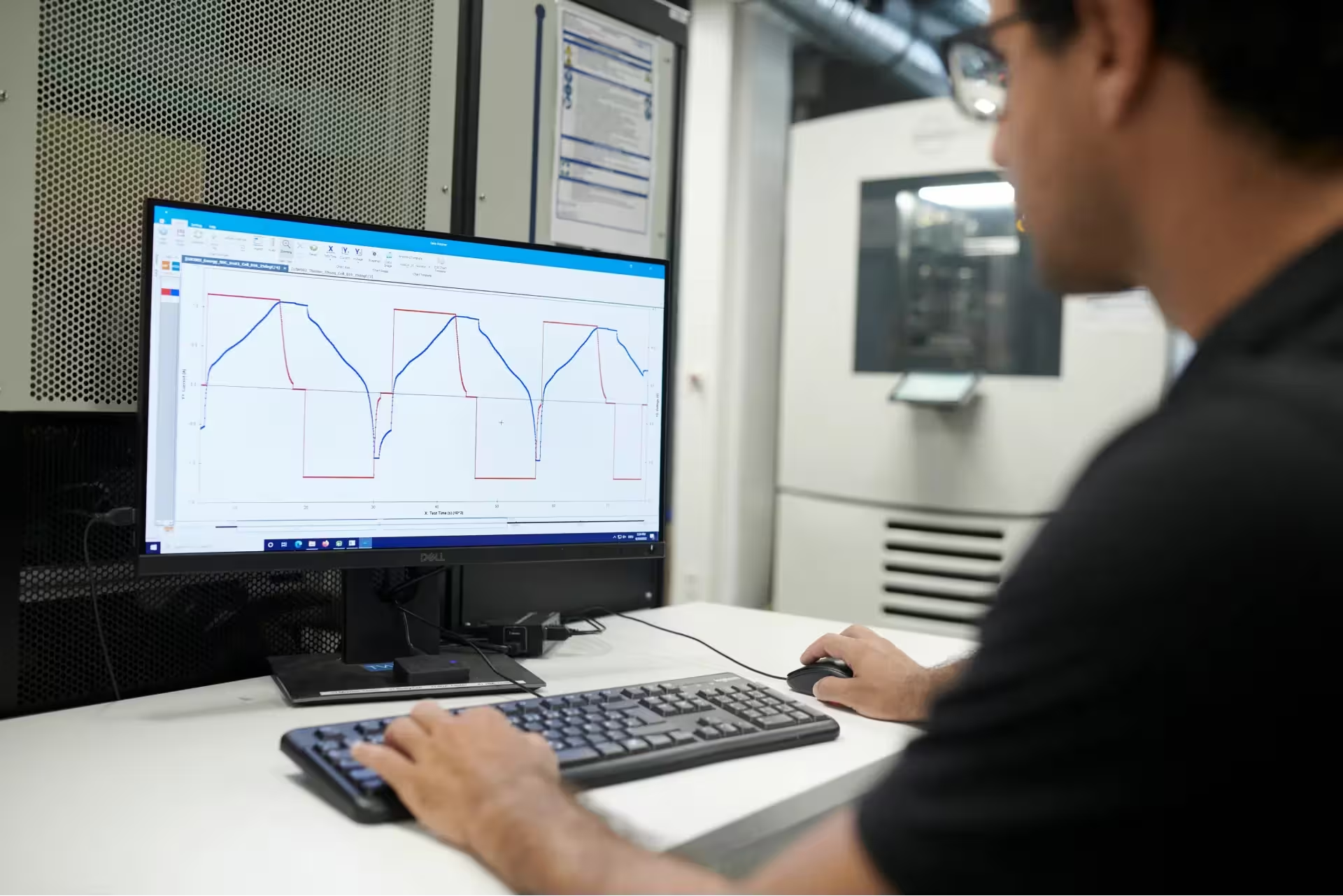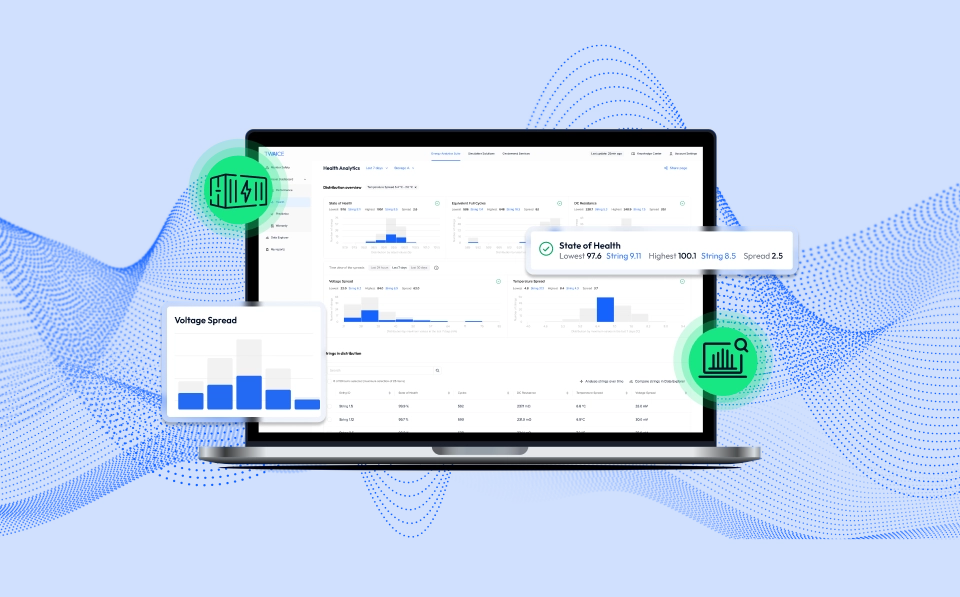Battery performance, lifetime and safety are highly dependent on temperature. With the recent high demand for power capabilities, heat management has become increasingly relevant.

Measurement Approaches for Thermal Impedance Spectroscopy of Li-ion Batteries
Two novel measurement methods for capturing the thermal behaviour of Li-ion cells in the frequency domain
Authors: Cedric Kirst, Juan Ramos Zayas, Jan Singer
Highlights
- Two new measurement approaches for Thermal Impedance Spectroscopy of Li-ion cells
- Reduction of the state of the art thermal measurement time by 62%
- Thermal models show a MAE below 0.3 K on a validation measurement in the time domain
This work introduces two novel measurement methods for capturing the thermal behaviour of Li-ion cells in the frequency domain. For the validation, we compare them to the state of the art measurement method, in which the battery is thermally stimulated by a set of discrete frequencies, each tested individually in a sequential manner.
All experiments are conducted with a cylindrical 18650 LFP-Graphite cell and lead to similar thermal impedance spectra. We validate a 0-D thermal model fitted to the respective measurement results with a thermal step response in the time domain. The results show, that all three models accurately represent the thermal behaviour of a Li-ion cell, with a mean absolute error below 0.3 K on the validation test. A spider-web diagram classifies and compares the given methods based on five values showing, that the state of art thermal measurement time can be reduced by 62% while also increasing the impedance measurement resolution by measuring multiple frequencies simultaneously.
Access the paper here.

See TWAICE Energy Storage Analytics in Action
Sign up for the next live group demo and learn how TWAICE can transform your BESS operations. In just 30 minutes, you’ll get a demo of key features and use cases, and engage with our product experts for a live Q&A.


.avif)

